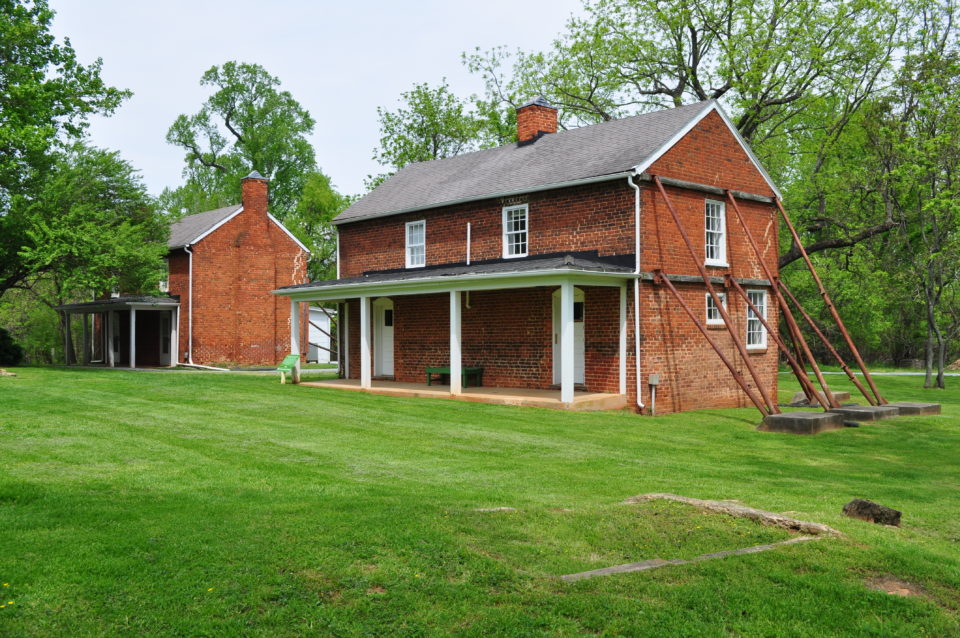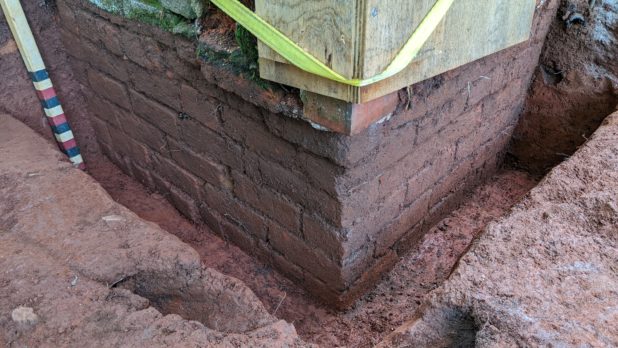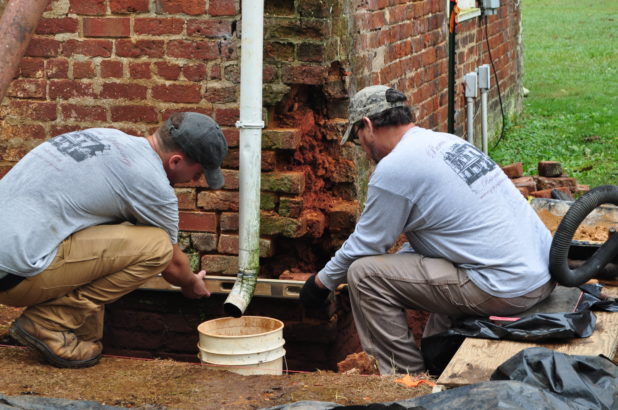Archaeology Blog
1857 Slave Dwelling Repairs
The 1857 Slave Dwelling, located only a few hundred feet east of the retreat house, often gets overshadowed by Jefferson’s architectural masterpiece. But this relatively unassuming brick structure is quite significant in its own right. As the only plantation-era laborer housing still standing on the property, it provides an important link to the history of slavery and emancipation at Poplar Forest. Over the years, this building has sustained significant damage to its outer walls, beginning with a severe storm in the 1990s, which required a system of metal support braces to be added to help with stability.
Earlier this year, a section of the northeast corner began to detach from the building, requiring emergency measures to replace the dislodged bricks. Poplar Forest’s archaeology staff excavated to expose the base of the brick wall, which sits directly on top of red clay soil with no foundation or footing. Many artifacts were found and, once cataloged, will be added to those found in previous excavations in the area to improve our understanding of Poplar Forest during the final years of slavery and the decades that followed the Civil War.
After the most recent excavation, mason Donny Purvis, a specialist in historic brickwork who has also done extensive work restoring Jefferson’s retreat house, carefully removed the damaged section of the structure and rebuilt the corner using historic bricks salvaged from elsewhere on the property. While this remediation has averted a crisis, it did not address the root cause of the collapse, which is that the structure was constructed without a solid foundation or effective water drainage. Poplar Forest has a plan to address these issues and will be working towards making this plan a possibility over the months to come.


